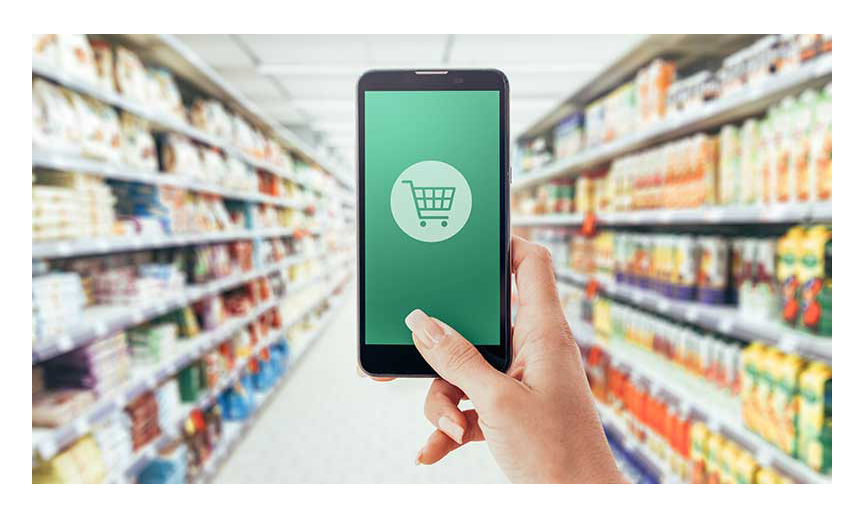New data from ACI Worldwide, a global provider of real-time digital payment software and solutions, and PYMNTS.com shows more consumers are shopping online for ease and convenience (76 percent) as opposed to avoiding potential COVID risks (59 percent).
The survey of 2,342 adult U.S. consumers, which addresses grocery shopping habits since the start of the pandemic, also shows that online shoppers are more likely to use mobile devices (55 percent) than laptops and desktops (38 percent) to place their orders. Additionally, 31 percent of online shoppers use PayPal, while 22 percent use other mobile wallets such as Apple Pay and Google Pay, according to the survey titled, “What Consumers Expect From Their Grocery Shopping Experiences.”
“While the pandemic drove an undeniable shift to digital shopping, it’s clear that consumers are more likely to continue to use these methods due to their ease and convenience than for the safety reasons that initially led them there,” said Debbie Guerra, EVP of ACI Worldwide. “These consumers have discovered the benefits of digital shopping and like what they’ve found.”
According to the data, 34 percent of consumers shop for at least some of their groceries online, and the share jumps to 57 percent among millennial shoppers. However, physical grocery stores remain of interest to most shoppers, with 94 percent reporting they shop in-store at least some of the time, according to the survey.
The data also shows that although consumers tend to favor debit (56 percent) and credit cards (51 percent) for in-store shopping more than contactless methods, there is a strong interest in contactless payment methods among Millennials, with roughly 50 percent “very” or “extremely” interested in contactless credit and debit cards and digital wallets to pay in-store.
“The survey suggests a potential lack of knowledge around contactless terminals that may be leading to low adoption of contactless payments,” Guerra said. “This presents a significant opportunity for grocery stores to educate consumers on in-store contactless payment options.”
According to the research, many consumers favor grocery stores that serve as a one-stop shop for non-food items such as cosmetics and clothing in addition to groceries. More than half (56 percent) of consumers would consider switching grocery stores if it offered additional products and services.
Consumers also favor stores that offer loyalty programs, with 54 percent saying they are members of their favorite stores’ loyalty programs and 63 percent of these members saying such incentives affect where they shop for groceries. In fact, 60 percent of those who are members of loyalty programs say that it leads them to spend more at the store.
“While the shift to digital shopping has been a boon for merchants, the challenge is that a competitor is only one click away,” Guerra said. “That’s where loyalty programs can make a difference. Offering consumers financial incentives to stick with their preferred stores can go a long way for merchants.”
Key findings
In-store vs. online grocery shopping
- 23 percent of shoppers use home delivery and 8 percent indicate it is their most preferred channel. Curbside pickup is similarly popular with 20 percent using it and 7 percent preferring it.
- Among those who purchased non-food products from grocery stores, 27 percent say it was an incentive for them to visit the store more often over the last 18 months – 49 percent of millennials say non-food offerings motivated them to make more trips to the store; 45 percent of Generation Z say so; 43 percent of bridge millennials; 22 percent of Generation X; and 12 percent of Baby Boomers and Seniors.
Delivery channels
- 14 percent of shoppers are purchasing groceries online with home delivery more since the onset of the pandemic – 14 percent are doing so more via curbside pickup.
- 57 percent of millennial grocery shoppers purchase at least some of their grocery products online.
- 15 percent have increased their grocery shopping in stores since the onset of the pandemic – 21 percent are doing so less than they did prior to the pandemic.
Digital and contactless payments
- 34 percent of respondents are “very” or “extremely” interested in contactless credit cards and 31 percent in contactless debit cards – 51 percent of bridge millennials and 50 percent of Millennials are interested in contactless credit cards; 49 percent of bridge millennials and 51 percent of Millennials are interested in contactless debit cards.
- 26 percent of consumers are “very” or “extremely” interested in using digital wallets to shop for groceries – 48 percent of bridge Millennials are interested in using digital wallets – 49 percent of millennials are interested in using digital wallets.
- 65 percent of online grocery shoppers use credit cards and 57 percent use debit cards to pay for groceries online.
- 56 percent of in-store grocery shoppers use debit cards and 51 percent use credit cards to pay for groceries in-store.
- 31 percent of online grocery shoppers use PayPal, while 22 percent use mobile wallets such as Apple Pay and Google Pay – 17 percent of online grocery shoppers use Apple Pay and 13 percent use Google Pay.
- 24 percent of shoppers report using at least one digital shopping channel more often to get their groceries since the start of the pandemic.
Loyalty programs
- 43 percent of consumers say they spend more money at grocery stores that have loyalty programs.
- 39 percent say loyalty programs encourage them to buy items at their favorite store that they would otherwise buy online.
Methodology
What Consumers Expect From Their Grocery Shopping Experiences Report, a PYMNTS and ACI Worldwide collaboration, is based on a census-balanced survey of 2,342 U.S. consumers conducted from June 9-13. The report examines how grocery stores can boost their value among consumers and tracks how consumers are employing digital channels to enhance or replace trips to brick-and-mortar supermarkets.


In this pandemic i prefer online shopping than local shopping